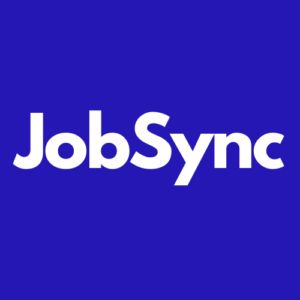
All organizations want an accelerated hiring process to deliver high-quality talent faster. However, prioritizing speed and efficiency above all else can often counter an organization’s mission, especially if that mission demands a more nuanced, candidate-centered approach.
Let’s say you have to choose between two applicants for a job. The first applicant truly understands what your customers and communities are dealing with and can offer genuine empathy, but they fall short on some of the skills needed for the role. The second applicant has the hard skills, years of experience, and a killer resume, but they have no natural empathy for the communities you serve.
Who do you hire?
If you’re mission-driven, the two candidates may not be equally viable. To advance the mission, you need people who are deeply engaged with your communities. You understand that hard skills can be taught, but empathy and mission fit are much more challenging to cultivate. When mission sits behind everything you do, recruiters and hiring managers must be able to look past proxies like education and work history and take the time to understand each candidate’s story and how their context aligns with the organization’s values.
Candidates heading toward the same destination won’t always get there by the same path.
More than Tools and Numbers
The difficulty with this approach is it’s a human approach. It’s often necessary for high-volume recruiters to rely on automated tools to filter through the mass of resumes they receive for open job postings, and perhaps run things through a keyword-based ATS. But that might disqualify otherwise great candidates for a host of irrelevant reasons, simply because their resume or work experience cannot capture the full range of their “story.”
Further, what you’re hiring for should guide the overall candidate experience. Hiring for empathy must be done with empathy, for example. Talent teams should deliver the same high-touch care to candidates as they do to customers—especially among mission-driven organizations, where candidates are often the same people you’re trying to serve.
The result is a talent organization with very different needs, where canned responses might not work for every candidate interaction, where you’re hiring a “whole person,” not a set of skills or qualifications, and where traditional measures of recruiter performance may not be sufficient to capture the complexities of the work being done.
Of course, talent acquisition teams must still be efficient. They still want to measure time to interview, time to fill, number of candidate touch points, offer acceptance rates, cost per hire, and all the other metrics that reflect how efficient and economical the hiring process is. But what makes the mission-driven heartbeat fast is betterment—transforming lives and outcomes in line with the mission. How do you measure that?
The answer will differ from organization to organization, mission to mission. Here, we lean on learnings from our recent roundtable with Bill Musman, Vice President of Talent Acquisition and Resource Management at AmeriHealth Caritas, to propose some different TA/HR metrics. They will help give you a more holistic view of your hiring process and ensure that the candidates coming into your organization align with its mission.
Six Metrics for Mission Fit
1. Early Turnover Rate
Losing new hires within the first few months happens more frequently than many organizations would like to admit. Every early loss is time and money wasted, which most mission-driven organizations cannot afford. By measuring the early turnover rate, you can identify where things might be going wrong in the hiring process and take action to improve it.
Musman says that retention is one of the key metrics his team tracks. “We have a claims examiner class with around eight people we hire from our workforce development partners. The measurement is on day 5, day 30, day 90, day 180—are they still here? Retention is making sure that they’re here and they’re staying here.”
2. Talent Mobility Rating
How often do you promote from within versus hiring externally? The talent mobility metric gives insight into how well your organization is upskilling and developing its existing talent and retaining it long-term. If your mission, like that of AmeriHealth, is to improve lives and raise people out of poverty, then tracking how well your organization is promoting from within can be a powerful indicator of whether or not you’re truly living up to that mission.
“Once people are here, how do we provide them with the skills they need to grow, whether they’re going vertically or latticing across our organization?” Musman says. “That’s something I want to be able to identify.”
3. Employee Engagement
Employee engagement assesses how supported employees feel and their overall satisfaction with their jobs so you can identify and address issues before they impact retention. For mission-driven organizations, it can also serve as a pulse check on mission alignment—are employees actively participating in the volunteering and community investment opportunities you offer?
“Once a week, I’ll get a message from our community investment team saying, ‘Here are the volunteer opportunities that are available; go sign up for one,'” Musman says. We measure that. I’ll get a report once a quarter. Where is everybody at from an [volunteer] hours perspective?”
4. Ramp-Up Time To Productivity
A good but tricky metric for mission-driven organizations to measure is how quickly a new employee can start actively producing. Time to productivity correlates with the quality of your onboarding programs and the mentorship/support offered to new employees.
It’s tricky because you may be hiring for hard-to-baseline soft skills, like empathy, and then teaching the technical skills after onboarding. Every person will have a different journey into the role, and their different starting points make it harder to capture progress in a single number, but it’s worth tracking. “One of the things we’re doing is we’re looking for those stories of those individuals that we’re able to progress and do a great job here. We’re still on that journey of figuring that out,” Musman says.
5. Candidate Experience
Measuring what candidates say about you and your hiring process from start to finish is not a new concept, but it is particularly relevant for mission-driven organizations. As Musman says, when hiring for empathy traits, you need to reinforce that with a high-touch, empathetic candidate experience.
Surveys and Net Promoter Scores can gauge empathy in the recruiting process and help proactively address concerns around communication, transparency, and feedback. “If a candidate rates a recruiter really well and they feel like they have a good relationship, that might be another way that you can quantify [empathy],” Musman says.
6. Skills Agility
Measuring skills agility aims to determine how well employees are learning and adapting to new skills. When you’re hiring for mission fit first and technical competencies second, it’s an excellent way to measure how well you’re onboarding, training, and developing staff in technical skills and whether employees are thriving in their roles. The metric would include participation rates in L&D programs, time to proficiency in the new skills, and internal mobility.
For organizations hiring for mission fit, these metrics provide valuable insights for continuous improvement. “Successful recruiters should know a great candidate when they see it, be able to get them into the organization, find them, assess them, close them, but also make sure that those folks are staying, getting promoted, and moving throughout the organization,” Musman says. “I feel like our job is not done when people start on day one.”



